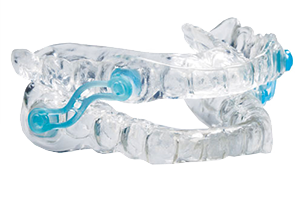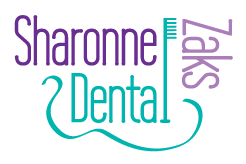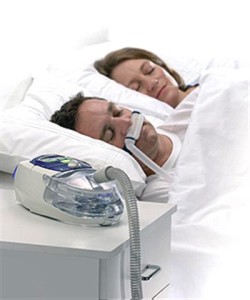snoring and sleep apnoea
Snoring is the sound that occurs when the tissues lining the air passages vibrate. This happens when the free flow of air during breathing is blocked. Snoring is more than just a nuisance; it is a major sign of a much more sinister and serious situation called obstructive sleep apnoea (OSA) so it is critical to investigate further and rule this out when snoring is happening.
Causes of snoring:
- Being overweight or obese with excess fatty tissue around the neck
- Smoking, which causes inflammation and irritation of the airways and tissues of the nose
- Alcohol, causing excess relaxation of the area at the back of the throat
- Medications, which act in the same way as alcohol eg sleeping tablets, sedative antihistamines
- Allergies, which cause swelling of the nasal passages
- Asthma, colds, sinus infections or blockage
- Anatomic blockages eg: large adenoids or tonsils (especially in children), a narrow throat, deformity of the nose
- Ageing, which can result in a wider thick neck, especially in middle aged men
- Eating too much at night
- Pregnancy
- Sleep position – sleeping on your back may cause your throat muscles and tongue to relax, fall back and block the airway
- Obstrucive sleep apnoea (see below)
Treatment of snoring:
The most appropriate treatment varies according to the cause(s) and severity of snoring. All factors are taken into account and addressed including partner disturbance, the presence of sleep apnoea, age, body-weight, degree of daytime sleepiness, alcohol-consumption, medical history and the anatomy of the upper airway. The main danger of snoring relates to the potential presence of sleep apnoea, which is present in up to 70% of adults who snore.

A custom made oral appliance for snoring. It holds the lower jaw forward opening the airway again. Image courtesy of grandrapidsmidental.com
Oral appliances are the most effective and comfortable treatment for snoring and are recommended as the first line treatment by most sleep physicians. Extensive research shows that 95% of people will have an improvement in the level of snoring when using an appliance. These appliances are discussed in detail below.
Sleep apnoea (OSA)
Sleep apnoea occurs when breathing momentarily stops altogether; the soft tissues in the throat and tongue collapse against the back of the throat and reduce/stop airflow. The brain sends a signal to restart the airflow which is called an ‘arousal’ and is seen as a spike in adrenaline.
This cycle of airway obstruction and arousal can occur many times in an hour and disrupts sleep greatly. Most people are unaware it is happening as they dont wake up fully. It is possible to have severe sleep apnoea without anyone observing that breathing has stopped in that moment.
Why is sleep apnoea so serious?
Sleep apnoea leads to poor sleep-quality then excessive daytime tiredness, and contributes to a large number of other health problems, including the following:
Cardiovascular disease: through a variety of complex mechanisms, OSA may cause high blood pressure, stroke, heart attack, heart failure, cardiac rhythm disturbances and night-time angina attacks.
Death: Research studies show that mortality rate (death rate) increases according to the severity of sleep apnoea – even mild OSA results in a 2.5 increase in mortality rate. Treating OSA correctly eliminates this risk. OSA is a known cause of sudden death at night time.
Obesity: Excessive daytime tiredness and metabolic changes that occur in patients with sleep apnoea make it particularly difficult to lose weight, sometimes as a result of secondary tiredness, poor motivation and depression.
Diabetes and insulin resistance: Patients with diabetes and OSA can frequently improve their diabetic control if their OSA is correctly treated. Many patients with OSA (even those without diabetes) have impaired glucose tolerance and increased glucose levels.
Insomnia: Patients with OSA experience recurrent awakenings, which can contribute significantly to insomnia, which involves difficulty in initiating and maintaining sleep.
Cognitive function and quality of life: Prolonged periods of poor sleep and sleep-deprivation can lead to depression, anxiety, lack of motivation, impaired memory and concentration, mood and behavioural changes. Daytime tiredness can also affect study, work performance and personal relationships.
Motor vehicle and workplace accidents: OSA sufferers have been shown to be at 4-9 times greater risk of having both car and workplace accidents.
Sexual dysfunction: This can occur in people with untreated OSA. Penile and erectile dysfuntion occurs in males and and a reduced sexual drive occurs in both men and women with this condition.
All of these risks can be significantly reduced by successful treatment of OSA
Signs and symptoms of sleep apnoea:
One or more of the following list is usually present:
-Snoring
-Episodes of gasping, snorting or choking during sleep
-Excessive daytime sleepiness, fatigue or lethargy
-Lack of energy and endurance
-Falling asleep or needing to have a nap during the day
-Disturbed or restless sleep (OSA sometimes causes insomnia)
-Poor memory and concentration
-Morning headaches
-Dry mouth or sore throat upon waking
-Irritability, depression, anxiety, mood and behaviour changes (including ADHD in children)
-Increased frequency of urination during the night
-Rapid weight gain or difficulty in losing weight
If sleep apnoea is suspected the only way to confirm the diagnosis is an overnight sleep test, which will also determine the severity. This can now be carried out at home by sensors that measure many things, including oxygen levels, brain and heart activity. The results are evaluated by a sleep physician and optimal treatment is recommended according to this information.
Treatment of sleep apnoea:
There are currently two main proven treatment options:
1) ORAL APPLIANCES
These are called mandibular advancement splints (MAS) and work by gently holding your lower jaw and tongue forward thereby keeping your airway open. They are considered the most successful first line treatment for mild and moderate OSA. They are made from thin high strength materials and are worn during sleep. There are two types of appliances:
1) Custom made: Manufactured to fit accurately from detailed impressions of the teeth and need to be fitted by a dentist. All research has confirmed that these are the most effective and comfortable. It is important to choose a dentist who is trained in sleep medicine and is experienced with the full range of oral appliances (over 40 designs available now). It is important to use only those appliances that are supported by valid studies.

Examples of current custom oral appliance designs. Image courtesy of sleepwise clinic www.sleepwise.com.au
2) Boil and bite: Available for purchase from the internet and are made from plastic shells that are one size fits all. The majority are non adjustable. They have been shown to be ineffective and are not an accurate indicator of how a custom device will feel.
2) CPAP (CONTINUOUS POSITIVE AIRWAY PRESSURE)/VPAP:
Compressed air is delivered through a tube into a mask or device that is worn over the mouth, nose or both. This keeps the airway open. CPAP is usually reserved for severe sleep apnoea. A new landmark Australian study has demonstrated that oral appliances are as effective as CPAP for treatment of OSA; this was due to appliances being much easier to tolerate so they are worn for more hours a night.

